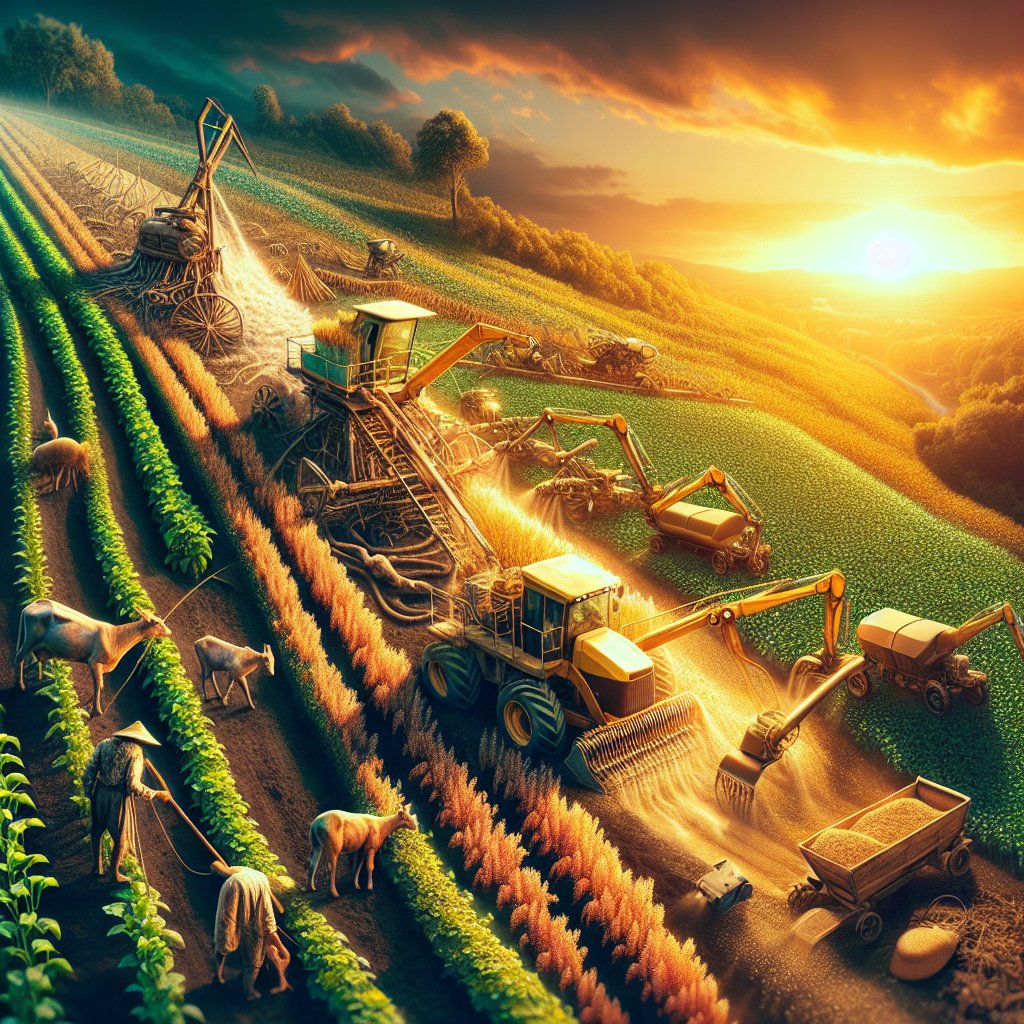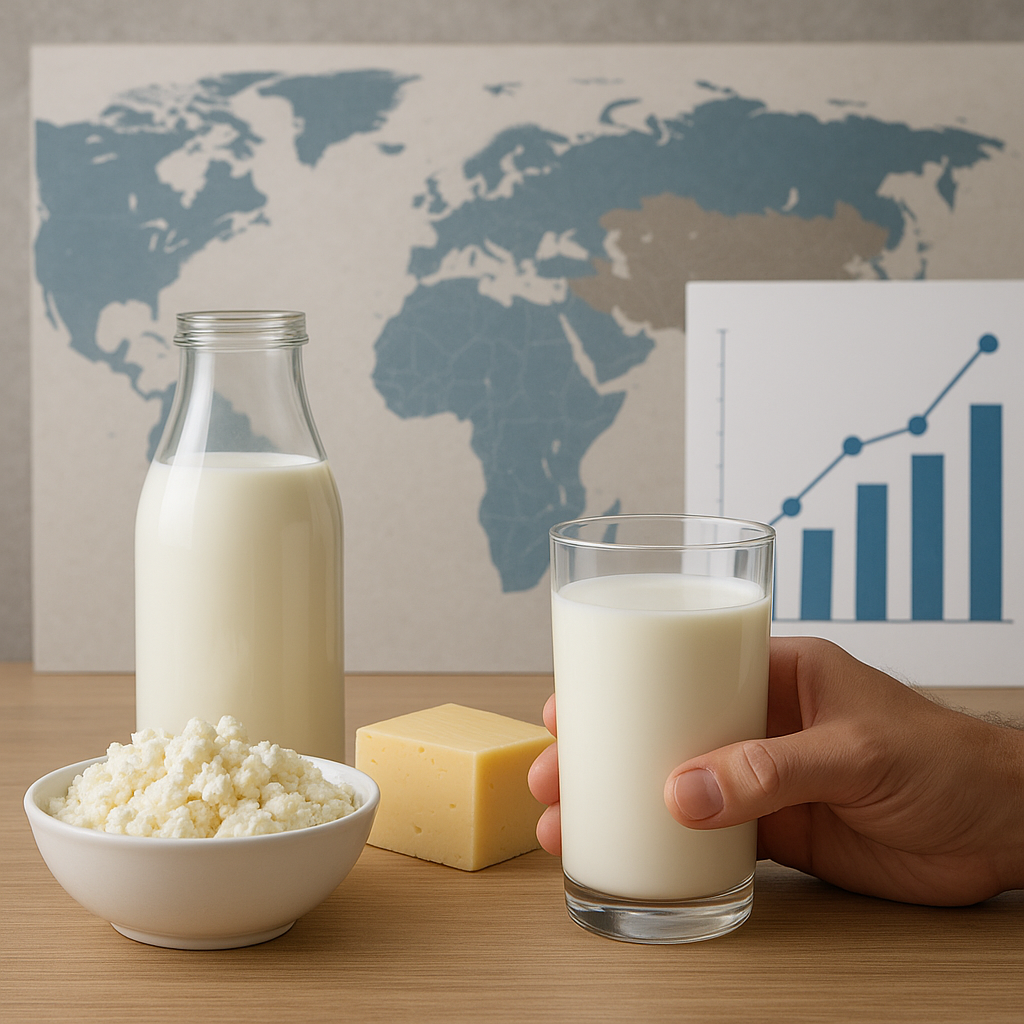The history of agriculture is a fascinating journey that reflects humanity’s evolution and adaptation to changing environments. Over thousands of years, agricultural practices have transformed from simple subsistence farming to complex global systems that feed billions of people. This article explores the historical development of agriculture and its global transformation, highlighting key milestones, technological advancements, and the challenges faced by the agricultural sector today.
Historical Development of Agriculture
The origins of agriculture can be traced back to around 10,000 BCE, during the Neolithic Revolution, when humans transitioned from nomadic hunter-gatherer lifestyles to settled farming communities. This shift was primarily driven by the domestication of plants and animals, which allowed for more reliable food sources. Early agricultural societies emerged in fertile regions such as the Fertile Crescent, Mesoamerica, and the Indus Valley, where favorable climatic conditions and rich soils supported crop cultivation.
As agriculture developed, so did the complexity of farming techniques. The introduction of irrigation systems, crop rotation, and selective breeding significantly increased crop yields and livestock productivity. These innovations laid the groundwork for the rise of civilizations, as surplus food production enabled population growth and the establishment of cities. Ancient civilizations, such as the Egyptians, Mesopotamians, and Chinese, made significant contributions to agricultural practices, including the development of plows, fertilizers, and advanced irrigation methods.
During the Middle Ages, agriculture in Europe underwent significant changes with the introduction of the three-field system, which improved soil fertility and crop rotation. The Agricultural Revolution of the 18th century marked another pivotal moment in agricultural history, characterized by the adoption of new technologies such as the seed drill and mechanized threshers. These innovations not only increased productivity but also paved the way for the Industrial Revolution, as fewer laborers were needed on farms, leading to urban migration and the growth of industrial cities.
Global Transformation of Agriculture
The 20th century witnessed a dramatic transformation in global agriculture, driven by technological advancements, globalization, and changing consumer demands. The Green Revolution of the 1960s and 1970s introduced high-yielding varieties of crops, synthetic fertilizers, and pesticides, significantly boosting food production in developing countries. This period saw countries like India and Mexico achieve self-sufficiency in staple crops, reducing hunger and poverty for millions.
However, the Green Revolution also brought challenges, including environmental degradation, loss of biodiversity, and increased reliance on chemical inputs. As agricultural practices became more industrialized, concerns about sustainability and food security emerged. The rise of monoculture farming, where a single crop is grown over large areas, led to soil depletion and increased vulnerability to pests and diseases.
In response to these challenges, the late 20th and early 21st centuries have seen a growing movement towards sustainable agriculture. Practices such as organic farming, agroecology, and permaculture emphasize the importance of ecological balance, biodiversity, and local food systems. These approaches aim to reduce the environmental impact of agriculture while ensuring food security for future generations.
Technological Innovations in Agriculture
Technological innovations continue to shape the future of agriculture, with advancements in biotechnology, precision farming, and digital agriculture playing a crucial role. Biotechnology has enabled the development of genetically modified organisms (GMOs) that are resistant to pests, diseases, and environmental stresses. These crops have the potential to increase yields and reduce the need for chemical inputs, although they remain a topic of debate regarding safety and environmental impact.
Precision farming, which utilizes data analytics, GPS technology, and remote sensing, allows farmers to optimize their operations by making informed decisions based on real-time data. This approach enhances resource efficiency, reduces waste, and minimizes environmental impact. For instance, precision irrigation systems can deliver water directly to the roots of plants, conserving water and improving crop health.
Digital agriculture, encompassing the use of mobile applications, drones, and artificial intelligence, is revolutionizing the way farmers manage their operations. These technologies provide farmers with valuable insights into crop health, soil conditions, and market trends, enabling them to make data-driven decisions that enhance productivity and profitability.
Challenges Facing Global Agriculture
Despite the advancements in agricultural practices and technologies, the global agricultural sector faces numerous challenges. Climate change poses a significant threat to food production, as rising temperatures, changing precipitation patterns, and extreme weather events can disrupt crop yields and livestock health. Farmers must adapt to these changes by adopting resilient practices and diversifying their crops to mitigate risks.
Additionally, the growing global population, projected to reach nearly 10 billion by 2050, will place immense pressure on food systems. Ensuring food security while addressing issues of equity and access remains a critical challenge. Smallholder farmers, who produce a significant portion of the world’s food, often lack access to resources, markets, and technology, hindering their ability to improve productivity and livelihoods.
Furthermore, the ongoing loss of biodiversity and degradation of ecosystems threaten the sustainability of agricultural systems. The overuse of chemical inputs, habitat destruction, and climate change contribute to declining pollinator populations and soil health, which are essential for productive agriculture. Addressing these challenges requires a holistic approach that integrates environmental, social, and economic considerations into agricultural policies and practices.
The Future of Global Agriculture
The future of global agriculture will depend on the ability to innovate and adapt to changing circumstances. Sustainable practices, technological advancements, and collaborative efforts among stakeholders will be essential in addressing the challenges facing the agricultural sector. Governments, NGOs, and the private sector must work together to create policies that support sustainable agriculture, promote research and development, and empower smallholder farmers.
Moreover, consumer awareness and demand for sustainable and ethically produced food are driving changes in agricultural practices. As more people seek locally sourced, organic, and environmentally friendly products, farmers are increasingly adopting practices that align with these values. This shift towards sustainable consumption can create new market opportunities and encourage the adoption of regenerative agricultural practices.
In conclusion, the history of agriculture is a testament to human ingenuity and resilience. From its humble beginnings to the complex global systems we see today, agriculture has undergone significant transformations that reflect societal changes and technological advancements. As we look to the future, it is crucial to embrace sustainable practices and innovative solutions to ensure food security, protect the environment, and support the livelihoods of farmers worldwide.



